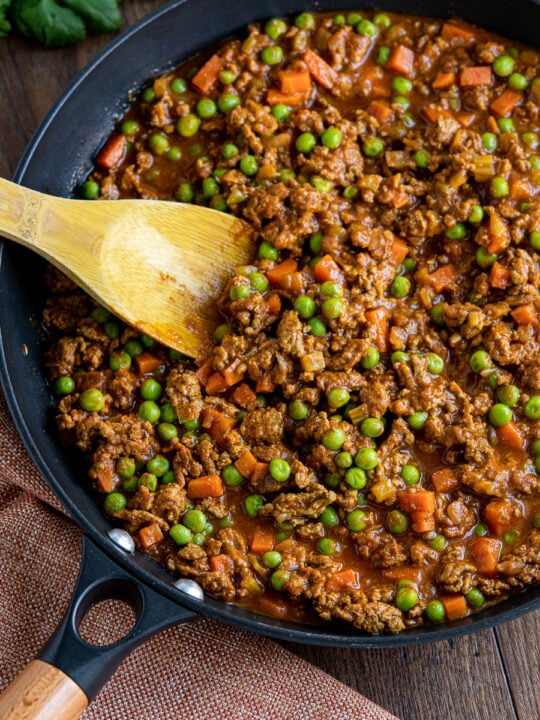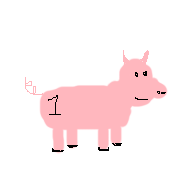|
CommonShore posted:I've had plenty of beef curries from Muslim areas. It's pretty common in Kerala too lol.
|
|
|
|

|
| # ? May 2, 2024 19:42 |
|
Hello thread. Kinda doing some drive-by requests for recipes, so I hope you don't mind if I do the same here: I got a small thing of this rogan josh seasoning and the smell is glorious but I can't say I remember ever having Rogan Josh, The Dish (possibly because I'm not big on lamb). The ingredients listed are: paprika, garlic, ginger, cumin, coriander, pepper, cayenne, cinnamon, cardamom, cloves and saffron. What would be a good way to use this in, for example, a chicken dish? My instinct is to use it in place of garam masala or generic "curry powder", but my instincts have frequently been wrong 
|
|
|
|
this not really indian, adjacent but this is the best thread I know of for getting responses about beans and pulses: is there any reason not to use Chana Dal for making hummus? I just tried it and holy crap it kicks rear end. Cooked in the instant pot in half of the time and no skins to remove, all for the same price per pound as the regular chick peas.
|
|
|
|
I can't think of any reason not to do it. Make another normal batch and do a taste test.
|
|
|
|
First, this weekend I tried out this recipe for dal makhani (although I simmered the beans in a dutch oven for about two hours rather than what the recipe specified). It was great. Served over basmati rice. Family had some, kids complained it was too spicy so I ate the rest. India must have the most regular colons on Earth. Anyway. Doc says I need to be more careful about my cholesterol. Indian food seems to be the best option for "low saturated fats but also high amounts of flavor." For saturated fat reduction, Is there anything to look for that would tell me that ghee cannot be replaced with rapeseed oil in any given recipe?
|
|
|
|
Rapeseed oil (and just about everything else) has a lower smoke point than Ghee. A lot of recipes call for sizzling spices in hot oil, probably a good idea to turn the temperature down a bit from the recommendation.
|
|
|
|
Use canola oil, and tempering your spices will be just fine.
|
|
|
|
Peanut, canola/rapeseed, vegetable, coconut, soybean, mustard; these are all fine oils for Indian food.
|
|
|
|
FaradayCage posted:Does anyone ever hybridize dal + meat curry? Kind of like standard (non-Texas style) chili? Are there any particular reasons not to? I've added some chana dal and moong dal to chicken curries before, mostly to sub for the lack of rice texture as I go low(ish)-carb.
|
|
|
|
Fruits of the sea posted:Rapeseed oil (and just about everything else) has a lower smoke point than Ghee. A lot of recipes call for sizzling spices in hot oil, probably a good idea to turn the temperature down a bit from the recommendation. dino. posted:Use canola oil, and tempering your spices will be just fine. TychoCelchuuu posted:Peanut, canola/rapeseed, vegetable, coconut, soybean, mustard; these are all fine oils for Indian food. Thanks! I assume I can also use low fat yogurt rather than full fat?
|
|
|
|
Idk, Iíd skip the yoghurt. Thereís a ton of dishes that donít call for it. Expannnnnd your horizoooooons. Also, most Indians would be horrified at the concept of low fat yoghurt.
|
|
|
|
Bollock Monkey posted:Dhansak is a popular dish here that has meat and lentils. There's no reason not to make food how you like it - you just might want to play with textures. haleem is also just lentils + meat + grain
|
|
|
|
AnimeIsTrash posted:haleem is also just lentils + meat + grain This is one of my absolute favourite indian dishes, although itís very rare to find a restaurant that does it, and often they only seem to offer it during Ramadan.
|
|
|
|
Looking it up, hell, now I want to try some. I think I'm missing the oats, one type of lentil, the masala. Hmmm.
|
|
|
|
|
Made the tikka masala out of The Curry Secret this week. It wasn't a bad curry but I was kind of surprised when I got to the end of it (the way it separates out the labor is kind of confusing if you haven't already memorized the steps for making curry sauce and preparing the meat) and realized that the tikka masala doesn't actually include any more tomato beyond what's in the basic curry sauce. It didn't really taste much like what I think of as tikka masala! (Also, why does it want one small can of nonspecific tomatoes which I then blend down to nothing, plus one teaspoon of tomato puree? That's an oddly specific measurement given that tomato puree comes in cans much larger than a single teaspoon!) Doing the chicken tikka in the oven worked out really well, though. Would use that again.
|
|
|
|
Rand Brittain posted:(Also, why does it want one small can of nonspecific tomatoes which I then blend down to nothing, plus one teaspoon of tomato puree? That's an oddly specific measurement given that tomato puree comes in cans much larger than a single teaspoon!) Tomato puree comes in squeeze tubes as well. Those are a much better purchase and will last in the fridge. Usually kept in the same section, but at least here they tend to be put on the edge of the section on the top shelf and not near the other tomato puree.
|
|
|
|
Rand Brittain posted:(Also, why does it want one small can of nonspecific tomatoes which I then blend down to nothing, plus one teaspoon of tomato puree? That's an oddly specific measurement given that tomato puree comes in cans much larger than a single teaspoon!) The tomato purée brings a different element to tomatoey flavour because it's richer and concentrated. Buy a tube, like someone else said.
|
|
|
|
I think the reason why is that concentrated tomato paste is a surprisingly good source of umami in vegetarian dishes. You can get a similar effect with overripe plum tomatoes if you skin them and remove the seeds. Just look for the ones that are extra squishy and stinky.
|
|
|
|
I've finally realized from the tomato puree/paste discussion why all the batches of daal I made over the holidays weren't as red as they were in the British cookbook I was using.
|
|
|
|
That makes sense, I suppose. Next time I might just try the chicken makhani, which looks significantly more tomato-y and tangy.
|
|
|
|
Hm, it doesn't look like they sell tomato puree in tubes around here, only tomato paste. I guess I'll just use that instead.
|
|
|
|
I suspect thereís some misunderstanding going on in this thread around different terminology for tomato products in different countries.
|
|
|
|
The Lord Bude posted:I suspect thereís some misunderstanding going on in this thread around different terminology for tomato products in different countries. OK I had to look it up and according to wikipedia, tomato puree is kind of a sludge, while tomato paste has a little more liquid. Neither of which should be confused with passata, which is uncooked. I usually use puree (not paste, like I said previously  ) because the flavour is more concentrated. ) because the flavour is more concentrated.
|
|
|
|
In australia at least: Tomato puree is tomatoes that have been blended till smooth and then cooked down at least. Tomato paste is tomato puree that has been cooked down substantially to form a dense, concentrated paste (either double or triple concentrated depending on brand) that can be squeezed out of a tube like toothpaste. Passata is the Italian version of tomato puree; itís not quite as smoothly blended, and itís not cooked as you said. It also never has anything other than tomato in it and maybe sometimes a pinch of salt. Tomato sauce is what Americans refer to as ketchup. I also find shallots confuse the gently caress out of people as well because the term refers to a very different thing depending on where youíre from.
|
|
|
|
A weird question but I don't think I've ever managed to get a really good idea about it despite trying my hand at indian cooking here and there for a while. What curries exactly are those extremely vibrant neon red ones? I've only had them at a couple of indian restaurants in the past and only ever at ones where there wasn't an accompanying english menu. I've been wanting to try to make em myself, but looking it up always gave me contradictory advice. Even if there's more than one that fit the description, I can just making them sequentially until I figure out which one tastes like the ones I remember.
|
|
|
|
ACES CURE PLANES posted:A weird question but I don't think I've ever managed to get a really good idea about it despite trying my hand at indian cooking here and there for a while.
|
|
|
|
A large amount of Kashmiri chilli powder in something can also give it a vibrant red colour. Chicken 65 is also typically very red (and one of my absolute favourite dishes)
|
|
|
|
I did some looking and it definitely looked similar to pav bhaji as you mentioned, but the thing I noticed was that's supposed to be a straight vegetable dish, where what I had had some lamb chunks in it. Don't know if that helps narrow it down any though, but the note about the food coloring and kashmiri powder helps. Definitely gonna try to make Chicken 65 at some point though, that looks great.
|
|
|
|
The Lord Bude posted:In australia at least: In America, tomato paste is the same as what you listed. Crushed tomatoes is tomatoes that have been blended until smooth. Tomato sauce is basically crushed tomatoes slightly cooked down with herbs and spices.
|
|
|
Stultus Maximus posted:In America, tomato paste is the same as what you listed. Crushed tomatoes is tomatoes that have been blended until smooth. Tomato sauce is basically crushed tomatoes slightly cooked down with herbs and spices. And then there's diced tomatoes, which is what you use if you want tomato texture without having fresh tomato (I use this in a squash lentil dish I like to make in the IP). Or whole peeled, but then you have to cut em up from the can.
|
|
|
|
|
ACES CURE PLANES posted:I did some looking and it definitely looked similar to pav bhaji as you mentioned, but the thing I noticed was that's supposed to be a straight vegetable dish, where what I had had some lamb chunks in it. Don't know if that helps narrow it down any though, but the note about the food coloring and kashmiri powder helps. Maybe Rogan Josh?
|
|
|
|
Stultus Maximus posted:In America, tomato paste is the same as what you listed. Crushed tomatoes is tomatoes that have been blended until smooth. Tomato sauce is basically crushed tomatoes slightly cooked down with herbs and spices. I think crushed tomatoes aren't blended until smooth, they're more roughly processed, sometimes with the seeds till intact.
|
|
|
|
Is there a rule of thumb or other guideline for buying south Asian spices? I recently read about a recall of tainted cinnamon applesauce, where the lead was traced to the use of lead chromate as an adulterant. It further referred to two studies which showed that a significant portion of turmeric imported from Bangladesh and India was adulterated with lead chromate to enhance color and increase weight. Should I be concerned with the 200-400 gram bags of spice from the local international grocer?
|
|
|
|
for cinnamon at least; I prefer buying sticks. Then I can also tell for certain if Iím actually buying Cinnamon or if itís Cassia pretending to be cinnamon which is a common form of food fraud (note that some dishes, in some cuisines, might specifically want you to use Cassia) I also buy Oregano from Greece that is sold On the stalk because thatís another thing that is often adulterated, with olive leaf. In general, wherever possible you should be buying whole spices and grinding them yourself as needed. Some recipes will want you to use the spices whole, you can see what youíre buying; and theyíll actually be fresh and flavoursome - even whole spices will go stale after a while but when you grind something it pretty much starts to go stale right away, a pre ground spice will be stale long before you buy it. Canít really do that with turmeric though; so I guess just try and buy from a popular store; beware of anything much cheaper than normal, and balance your purchase quantity with your usage needs so it doesnít sit around in your cupboard for a year.
|
|
|
|
Stultus Maximus posted:Should I be concerned with the 200-400 gram bags of spice from the local international grocer? No more than you should be concerned about your airbags being subject to recall, honestly. Heavy metal adulteration takes explicitly bad actors all the way down the the supply chain and the chances this shows up at something like a Whole Foods bulk bin are slim to nil
|
|
|
|
ACES CURE PLANES posted:I did some looking and it definitely looked similar to pav bhaji as you mentioned, but the thing I noticed was that's supposed to be a straight vegetable dish, where what I had had some lamb chunks in it. Don't know if that helps narrow it down any though, but the note about the food coloring and kashmiri powder helps. was it keema? it looks kind of like this but the consistency can vary depending on how liquidy you want it 
|
|
|
|
Stultus Maximus posted:Is there a rule of thumb or other guideline for buying south Asian spices? I recently read about a recall of tainted cinnamon applesauce, where the lead was traced to the use of lead chromate as an adulterant. It further referred to two studies which showed that a significant portion of turmeric imported from Bangladesh and India was adulterated with lead chromate to enhance color and increase weight. Should I be concerned with the 200-400 gram bags of spice from the local international grocer? Spices can be contaminated intentionally but can also be contaminated from the soil they are grown in or from lead-containing pesticides or processing equipment. I donít really have any good answers because this is a rabbit hole I have been in for nearly a year. The lack of regulations in the US, complexity of the supply chain, and varying levels of consumption from person to person make it hard to give any general advice. The advice above is good, get your spices from a reputable domestic (assuming you are in the US) source, whole if possible. But that doesnít totally rule out the contamination in many popular US brands. If you are still concerned, ultimately the only thing that really matters is blood lead level which costs like $50 per test.
|
|
|
|
The Lord Bude posted:for cinnamon at least; I prefer buying sticks. Then I can also tell for certain if Iím actually buying Cinnamon or if itís Cassia pretending to be cinnamon which is a common form of food fraud (note that some dishes, in some cuisines, might specifically want you to use Cassia) kreeningsons posted:Spices can be contaminated intentionally but can also be contaminated from the soil they are grown in or from lead-containing pesticides or processing equipment. Thanks. I'll probably skip the $3/200 gram turmeric bags. I'll probably roll the dice on some other things, since the imported 200g bags of kashmir, aleppo, and other specialty chili powders are the only options around here. McCormick and Spice Island labels don't really do that sort of thing.
|
|
|
|

|
| # ? May 2, 2024 19:42 |
|
For chilis at least you can look for whole chilis, probably less likely to be adulterated. The mexican groceries around me carry lots of whole chilis, and they grind up real nice in a coffee grinder.
|
|
|
































